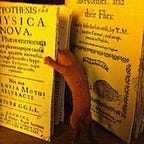4- Library Use
Final week of June
This week I’ve been looking at some sources that identify London as an exceptional place (exceptional within England, that is).
I used EEBO to track down and review a few quotations that I found in articles by literature scholars and historians. This is from The annales of England Faithfully collected out of the most autenticall authors, records, and other monuments of antiquitie, lately collected, since encreased, and continued, from the first habitation vntill this present yeare 1605. By Iohn Stow citizen of London. (London, 1605), STC 23337.
This quotation is about the assembly of the Trained Bands, an Elizabethan innovation to the Tudor militia system. You can see it ends in tragedy for one of its participants, which is especially fascinating to me and will be useful as well.
The historian in whose dissertation quotes from this passage does not include that detail in his account…and another historian who mentions the same muster briefly also doesn’t mention it, instead focusing on London’s capacity to raise large forces given its size and wealth. One of the things I’ve been writing about for the last decade is the distinction between the militia’s assembly for domestic defense and the foreign levy; many English works from the period are keen to make this distinction as well, specifically to ensure nobody saw attending a muster as an activity that made somebody a “real” or experienced soldier. Even so, a person could get hurt and die.
In the play The Knight of the Burning Pestle, the Citizen George describes a very similar occurrence and says (not quite wistfully, maybe gravely?), “yet, I thank God, I am here…” and repeats “yet for all this I am here, wench.” Being able to access this text and find the quotation (even without the TCP transcribed text!) was key here — the part not quoted by my historians is the part that’s going to make this chapter work super well.And more than that, I can honestly say I have found the exact moment that inspired one of my plays. Please, nobody take me this from me! By this I don’t just mean don’t steal it, but also please don’t tell me somebody else already pointed this out in such specific terms…
On that note, I knew I needed to review an article I’d read long ago and have been meaning to revisit, the fantastic piece on The Knight of the Burning Pestle by Janette Dillon, “”Is Not All the World Mile End, Mother?”: The Blackfriars Theater, the City of London, and “The Knight of the Burning Pestle” (Medieval & Renaissance Drama in England. 9 (1997): 127–148. Dillon actually discusses a lot of what I want to discuss in my own chapter, and I will need to negotiate how to incorporate her insights while also adding a shade of insight from my own long term study of the institution that she discusses there in briefer terms.
Finally, I also used The Agas Map to get a sense of where some of these places are in relation to the English theatres. It isn’t part of my own library’s resources, but thankfully is available to all and it is awesome, frankly.
Ok — so a new month is here, and it’ll be the last “full” month of the summer since August will be cut short with the advent of Fall courses. I have to make sure July is even more productive than June, which means MORE LIBRARY!!
